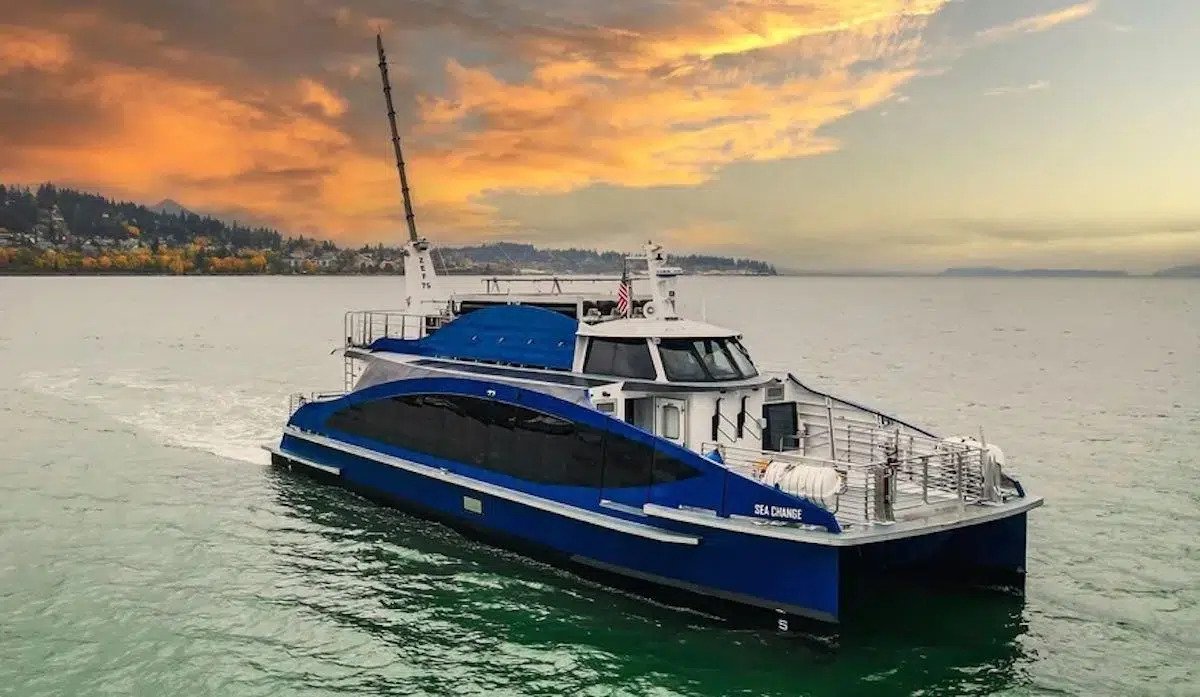
The future of maritime transportation in America has taken a significant leap with the upcoming launch of the first hydrogen-powered ferry in San Francisco. This project, developed for over five years by Switch Maritime, represents a crucial step towards emission reduction. The company has raised $10 million in Series A funding, with the goal of expanding its fleet and moving towards a more sustainable ferry construction business model.
The Sea Change Ferry
The ferry, named Sea Change, has a capacity of 75 passengers and is primarily propelled by fuel cells. These cells generate electricity by combining hydrogen and oxygen, allowing the electric motors to operate without emitting carbon dioxide or toxic pollutants, only producing a bit of heat and water vapor. Additionally, the ferry’s power system is complemented by a 100 kWh lithium-ion battery.
Commitment to Green Hydrogen
Initially, Sea Change will use conventional hydrogen produced from fossil gas through emission-intensive methods. However, the goal is to transition to the exclusive use of “green hydrogen,” produced with carbon-free electricity and water, as soon as it becomes available in San Francisco and other regions.
 Ferries, especially those using outdated diesel engines, emit large amounts of health-damaging pollutants such as suspended particles and nitrogen oxides.
Ferries, especially those using outdated diesel engines, emit large amounts of health-damaging pollutants such as suspended particles and nitrogen oxides.
In California, ferries account for only 2% of all commercial vessels in ports, but they contribute to 11% of total PM 2.5 emissions and 15% of total NOx emissions in the maritime category.
The implementation of zero-emission technologies in ferries is crucial, especially to protect marginalized and densely populated communities that have long endured pollution.
Batteries vs. Hydrogen
Switch Maritime maintains a neutral position between battery technologies and hydrogen fuel cells, choosing the option that best suits its clients’ needs. Although electric ferries face challenges in terms of range and charging requirements, hydrogen ferries can travel longer distances and for a longer duration due to their hydrogen storage tanks.
Origins and Innovations of the Sea Change
The idea of building the Sea Change originated from a study conducted by Sandia National Laboratories in 2016.
Switch Maritime acquired the Zero Emission Industries ferry in 2020, and since then, the ferry has been equipped with 360 kilowatts of fuel cells, hydrogen storage tanks, and a 600-kilowatt electric propulsion system. Sea Change can sail up to 300 nautical miles at speeds of up to 15 knots, comparable to diesel ferries.
Despite delays related to the pandemic, Sea Change is expected to begin operating in the early next quarter of 2024. It will be part of the San Francisco Bay Ferry fleet and is included in the broader WETA effort to convert 50% of its fleet to zero-emission technologies by 2035, marking a significant milestone in the transition to a emission-free maritime future.
SOURCE: EcoInventos
Read the most up to date Fuel Cell and Hydrogen Industry news at FuelCellsWorks




